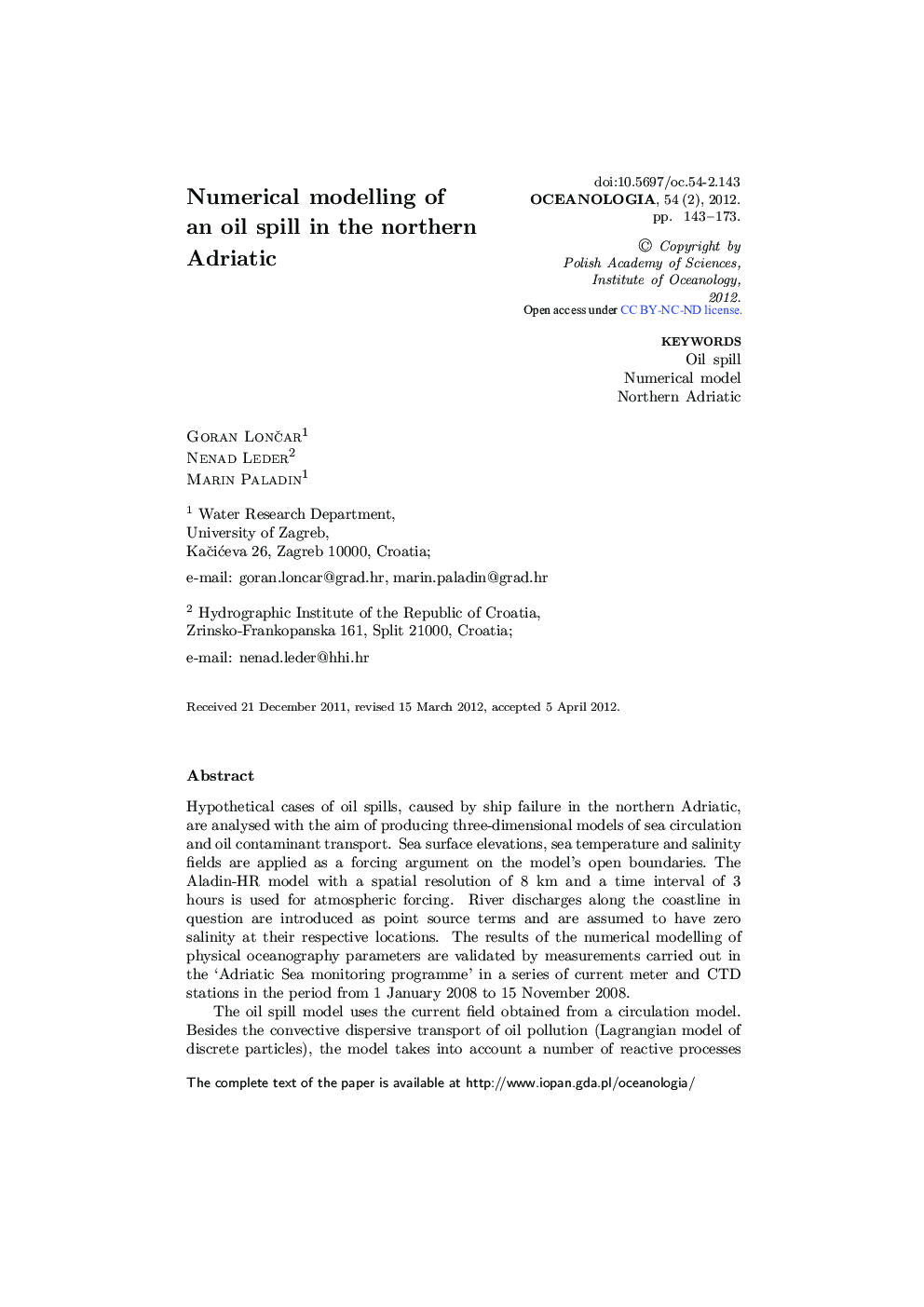| کد مقاله | کد نشریه | سال انتشار | مقاله انگلیسی | نسخه تمام متن |
|---|---|---|---|---|
| 2069910 | 1078441 | 2012 | 31 صفحه PDF | دانلود رایگان |

Hypothetical cases of oil spills, caused by ship failure in the northern Adriatic, are analysed with the aim of producing three-dimensional models of sea circulation and oil contaminant transport. Sea surface elevations, sea temperature and salinity fields are applied as a forcing argument on the model’s open boundaries. The Aladin-HR model with a spatial resolution of 8 km and a time interval of 3 hours is used for atmospheric forcing. River discharges along the coastline in question are introduced as point source terms and are assumed to have zero salinity at their respective locations. The results of the numerical modelling of physical oceanography parameters are validated by measurements carried out in the ‘Adriatic Sea monitoring programme’ in a series of current meter and CTD stations in the period from 1 January 2008 to 15 November 2008.The oil spill model uses the current field obtained from a circulation model. Besides the convective dispersive transport of oil pollution (Lagrangian model of discrete particles), the model takes into account a number of reactive processes such as emulsification, dissolution, evaporation and heat balance between the oil, sea and atmosphere. An actual event took place on 6 February 2008, when the ship ‘Und Adriyatik’ caught fire in the vicinity of the town of Rovinj (Croatia) en route from Istanbul (Turkey) to Trieste (Italy). At the time the fire broke out, the ship was carrying around 800 tons of oil. Thanks to the rapid intervention of the fire department, the fire was extinguished during the following 12 hours, preventing possible catastrophic environmental consequences. Based on this occurrence, five hypothetical scenarios of ship failure with a consequent spill of 800 tons of oil over 12 hours were analysed. The main distinction between the simulated scenarios is the time of the start of the oil spill, corresponding to the times when stronger winds were blowing (> 7 m s− 1) with a minimum duration of 24 h within the timeframe. Each scenario includes a simulation of oil transport for a period of two months after the beginning of the oil spill.The results show that the coastal belt between the towns of Poreč and Rovinj is seriously exposed to an oil pollution load, especially a few days after a strong and persistent bora (NE wind).
Journal: Oceanologia - Volume 54, Issue 2, 27 April 2012, Pages 143–173